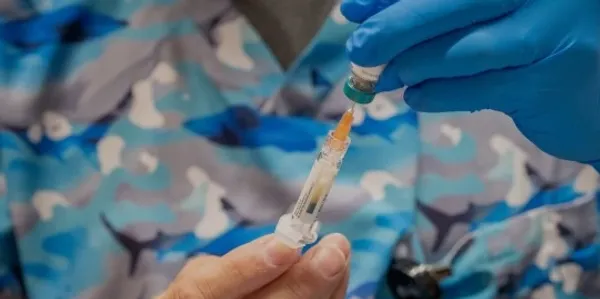Measles Cases Reach 33-Year High Amid Growing Vaccine Hesitancy
By: Ark-La-Tex Staff Writer
Published July 13, 2025
Measles cases in the United States have reached their highest level since 1992, according to data released this week by the Centers for Disease Control and Prevention (CDC). Health officials report more than 1,450 confirmed cases so far in 2025, a dramatic increase compared to previous years and a troubling sign of the disease’s resurgence.
The rise in infections is being attributed to a decline in routine childhood vaccinations, particularly the measles, mumps, and rubella (MMR) vaccine. Public health experts warn that increasing vaccine hesitancy, fueled by misinformation, distrust, and access issues, is placing communities at greater risk of preventable disease outbreaks.
Concentration of Cases
Measles outbreaks have been concentrated in several states, including California, Texas, New York, and Florida. In many cases, the outbreaks occurred in areas with lower-than-average vaccination rates, including some schools, religious communities, and rural regions where vaccine uptake has dropped below the 95% threshold needed for herd immunity.
“Measles is one of the most contagious viruses known,” said Dr. Elena Moore, a CDC epidemiologist. “It only takes a small number of unvaccinated individuals in a community to spark an outbreak.”
According to CDC officials, the virus is primarily being spread among unvaccinated individuals, with most cases involving children under the age of 10. In some instances, infants too young to be vaccinated have been infected through community transmission.
Hospitalizations and Complications
Of the confirmed cases so far this year, approximately 20% have required hospitalization due to complications such as pneumonia, dehydration, or high fever. While there have been no deaths reported in 2025 as of mid-July, experts warn that measles can be fatal, particularly for young children, immunocompromised individuals, and the elderly.
The CDC is closely monitoring developments and working with local health departments to increase outreach, particularly in communities where misinformation about vaccines is prevalent.
Factors Behind the Surge
Several factors are contributing to the increase in measles cases, according to public health researchers:
Vaccine Hesitancy: Surveys show that a growing number of parents are choosing to delay or refuse vaccinations due to concerns over safety, despite decades of scientific evidence showing vaccines are both safe and effective.
Access and Infrastructure: In some areas, especially rural or underserved urban neighborhoods, access to pediatric care and vaccines remains limited, creating logistical challenges for families.
COVID-19 Disruptions: The pandemic led to significant drops in routine vaccination rates globally and domestically due to clinic closures, healthcare delays, and shifting priorities. Recovery in vaccination coverage has been uneven.
Public Health Response
Health departments in affected regions have initiated emergency vaccination clinics, public information campaigns, and school-based outreach programs to raise awareness and encourage immunization. Some school districts have re-evaluated their vaccination policies in light of the outbreaks, while others are working with parents to ensure students are up to date on required shots.
Dr. Natasha Green, an infectious disease specialist at Emory University, emphasized the importance of rebuilding public trust in science. “The measles vaccine has saved millions of lives over the last half-century. We now have to double down on education, access, and community engagement to prevent these preventable illnesses.”
Global Perspective
The U.S. is not alone in facing a resurgence. The World Health Organization (WHO) has reported a global uptick in measles cases in 2024 and 2025, particularly in regions with low vaccine coverage. International travel has also contributed to the reintroduction of measles in areas that had previously eliminated the disease.
Looking Forward
Public health officials stress that measles is entirely preventable with timely vaccination. The MMR vaccine, which is typically administered in two doses during early childhood, provides 97% protection against the virus.
“The goal isn’t to assign blame,” said Dr. Moore. “It’s to protect children, protect communities, and prevent future outbreaks. That starts with accurate information and access to care.”
As the country confronts this public health challenge, authorities continue urging parents, caregivers, and healthcare providers to prioritize immunizations and remain vigilant.
